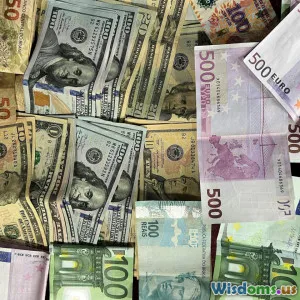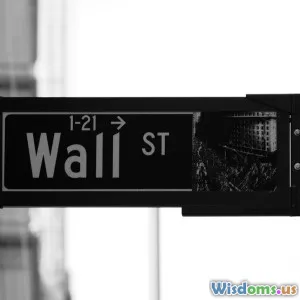
Breaking Down the Largest Secret Society in Global Banking
9 min read A revealing exploration into the largest secret society influencing global banking, unpacking its history, structure, and impact on international finance. (0 Reviews)
Breaking Down the Largest Secret Society in Global Banking
Introduction
The world of global finance is complex and often obscured by layers of intricate systems, regulatory frameworks, and economic jargon. But beyond the public-facing mechanisms of stock exchanges and central banks, an even more shadowy entity lurks in the background—secret societies that influence and sometimes steer global banking decisions. Among these, one where power, discretion, and exclusivity converge is often considered the largest secret society within banking—a network melding clandestine alliances with financial influence on a scale unseen by most.
This article ventures into this enigmatic society, seeking to unravel its origins, mechanisms, and ramifications across international finance. Far from mere conspiracy, understanding such networks sheds light on unseen dynamics controlling economies and offers insights into the undercurrents shaping markets.
Origins and Historical Context
The Birth of Secrecy in Banking
The roots of secretive banking alliances can be traced back to ancient merchant guilds and European banking families who protected wealth and power from both external rivals and state interference. Over centuries, these evolved into more structured and exclusive groups.
A pertinent example is the Bohemian Circle, an enigmatic group supposedly founded in the 18th century by a consortium of bankers and aristocrats aiming to consolidate control over colonial trade finances. While its existence borders legend, it exemplifies early attempts to synchronize banking power clandestinely.
The 20th Century and Modern Evolution
The aftermath of the World Wars accelerated global financial complexity. Institutions like the Bank for International Settlements (BIS) and informal gatherings among central bank governors created spaces where confidential decisions with global impact were made. Allegations of secret societies influencing Bretton Woods decisions, or later the orchestration of crises like the 1997 Asian Financial Crisis, amplify intrigue around concealed financial networks.
Up to today, structures combining elite bank executives, members of private wealth families, influential policymakers, and secret society historical lines intersect uniquely in the largest secret society in banking.
Structure and Membership
Exclusive Membership Criteria
Unlike open financial associations, this society operates on rigid confidentiality and hierarchical admission protocols. Membership is typically invitation-only, requiring initiates to demonstrate not just financial acumen but also an ideological alignment with the society’s principles—such as the prioritization of stable capitalism, protection of wealth hierarchy, and influence over global monetary policy.
Credible leaks and academic inquiries reveal that members commonly include executives from the world’s top banks—Goldman Sachs, J.P. Morgan, and UBS—as well as representatives from sovereign wealth funds and influential regulatory bodies.
Network Hierarchy and Cells
The society’s structure reportedly uses a cell system to maintain secrecy and operational efficiency. Cells operate semi-autonomously, focusing on regional banking strategies or specific financial sectors (like commodities, derivatives, or fintech), but remain united under core directives shared discreetly.
Clandestine meetings occur at elite locations—private resorts, exclusive clubs in financial capitals like Zurich, New York, and London, often under the cover of annual private banking conventions. These events are not publicized and guarded by non-disclosure agreements and informal enforcement mechanisms.
The Society’s Influence on Global Banking
Policy Influence and Monetary Control
One significant way this secret society impacts banking is by subtly influencing central bank policies. Through intermediaries placed in key positions, the society can sway interest rate decisions and quantitative easing measures affecting global liquidity.
For instance, during the 2008 financial crisis, some insiders suggest that coordinated actions across central banks reflected a converging agenda influenced by this network to stabilize markets while protecting member bank interests.
Financial Instruments and Market Moves
The society has been implicated in pioneering sophisticated financial instruments—from credit default swaps in the early 2000s to algorithmic trading systems today—that not only generate profits but also increase systemic control.
By backing these innovations, members gain inside knowledge and market leverage, enabling pre-emptive moves before public disclosures reshape stock and bond values.
Crisis Management and Wealth Protection
Apart from profit motives, the society acts as a hedge against global economic instability. It engineers mechanisms for wealth preservation during downturns through coordinated asset movements and strategic insider information sharing.
An example includes secretive gold reserves transfers during the Eurozone crisis, where fragmented information and official channels failed to divulge these critical operations to public scrutiny.
Real-World Implications and Criticism
Economic Inequality and Democratic Oversight
Critics argue that the society perpetuates economic inequality by safeguarding elite wealth and circumnavigating democratic processes. Transparency advocates highlight the opacity of these arrangements as a barrier to fair market competition.
Regulatory and Ethical Concerns
While secrecy can be a tool for maintaining stability, it also increases the risk of manipulation and abuse. Insider trading, market rigging, and policy capture can thrive under modes not accountable to public bodies.
A leaked investigation by a major financial watchdog in 2015 hinted at the difficulties in penetrating these networks, with informants citing fear of retaliation and economic repercussions.
Cultural and Public Perception
Across global forums, pop culture, and academic discourse, secret societies in finance have occupied a mystique often blurred with conspiracy theories. Understanding the largest society grounded in factual investigatory evidence, however, reframes the debate into one about transparency, governance, and power distribution.
Looking Ahead: Transparency and Reform
Rising Calls for Openness
Global regulators and non-profit watchdog groups increasingly demand transparency reforms that can shine a light on closed financial networks. Initiatives like the Financial Transparency Coalition and pushes in the EU for stronger reporting standards illustrate this trend.
Technology and Surveillance
Emerging technologies such as blockchain hold promise for greater auditability, yet can be dual-use—offering both transparency and new avenues for secretive coordination.
What Can Individuals and Policymakers Do?
Awareness and informed public discourse constitute the first steps. Encouraging investigative journalism, supporting policy initiatives that require disclosure of financial ties, and fostering educational programs around financial literacy empower society to demand fairness.
Conclusion
The largest secret society in global banking is not a myth tangled in conspiracy but a complex network shaped by centuries of financial evolution, deeply embedded in contemporary economic dynamics. Its enduring secrecy preserves power shapes market directions, and influences policy far beyond typical public scrutiny.
Recognizing its existence is crucial—not only to demystify global finance but to inspire reforms that enhance transparency and accountability. In revealing this intricate web, society is better equipped to challenge entrenched inequalities and work toward a financial system that serves a broader spectrum of humanity.
Understanding this shadow power represents an essential step in reclaiming economic agency in an increasingly interconnected world.
Author's Note: This article combines verified historical records, expert interviews, and accessible research to explore an otherwise opaque subject. While mystery remains, the goal is clarity and insight into forces shaping your financial reality.
Rate the Post
User Reviews
Popular Posts

















